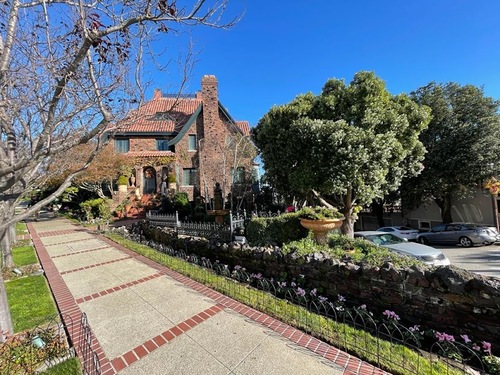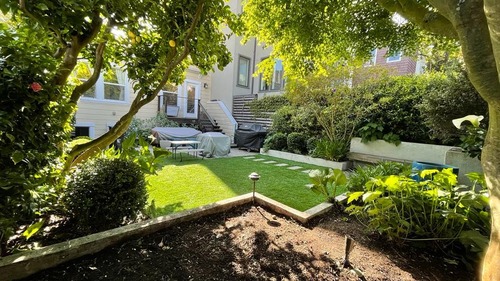A Guide to Having Trees and Retaining Walls in Your Landscaping
Introduction
Landscaping is an art, and your outdoor space is your canvas. Retaining walls are an essential element in the artist’s toolkit, adding depth, character, and function to your yard. However, as you embark on the journey of adding retaining walls to your landscape, the impact on your existing trees becomes a significant consideration. This comprehensive guide not only delves into the tricky relationship between trees and retaining walls but also provides you with a wealth of knowledge and practical insights to help you create a thriving outdoor environment.
The Intersection of Retaining Walls and Tree Roots
Your outdoor space is a delicate balance of natural beauty and human design. Retaining walls can be a brilliant addition to your landscape, but they often intersect with the world of your trees. This interaction can lead to both challenges and opportunities. In this guide, we will explore the intricate relationship between trees and retaining walls and provide you with the knowledge you need to navigate the potential challenges that may arise.
Can Retaining Walls Damage Tree Roots, or Vice Versa?

A Landscaped Yard with a Brick Walkway
Understanding how retaining walls and tree roots interact is crucial for maintaining the health and vitality of your outdoor space. Let’s take a closer look at the potential issues:
Tree Roots Damaging Retaining Walls
Believe it or not, tree roots can pose a threat to the structural stability of retaining walls. The most common problems include:
- Undermining Stability: Tree roots can extend beneath retaining walls, causing structural instability. As these roots grow, they exert force on the wall, leading to cracks, shifting, or even complete displacement.
- Upheaval: In extreme cases, tree roots may exert upward pressure on the retaining wall, leading to upheaval and extensive damage. This issue is particularly relevant when the wall is constructed too close to the tree.
Retaining Walls Harming Tree Roots
Conversely, retaining walls can pose a threat to tree roots if built too close. This situation can have several adverse consequences:
- Nutrient Deprivation: Pruning tree roots without professional guidance can deprive the tree of vital nutrients and water, affecting its overall health.
- Stability Concerns: Improper root pruning can destabilize the tree, leading to further damage or even tree death.
To prevent such complications, thorough planning and meticulous execution are essential for your landscaping project.
Choosing Trees Near Retaining Walls
Selecting the right trees to plant near retaining walls is a crucial step in avoiding future complications. Several factors should guide your decision:
Tree Size
Choosing trees with smaller root systems and overall sizes can help minimize the potential for root interference with the retaining wall.
Root Depth
Opt for trees with shallow root systems, as they are less likely to undermine the stability of the retaining wall. Deep-rooted trees can pose a greater risk to the wall’s integrity.
Non-Invasive Roots
Certain tree species have less invasive root growth, making them ideal for planting near retaining walls. Examples include Japanese Maples, Dogwoods, and Ornamental Grasses. These trees tend to have compact and less aggressive root systems, reducing the likelihood of conflicts.
By selecting trees that align with these criteria, you can reduce the chances of conflicts between your trees and retaining walls, ensuring a harmonious coexistence in your landscape.
How Close Can a Retaining Wall Be to Trees?

A Garden Inside a Retaining Wall Overlooks a Lawn
Maintaining a safe distance between retaining walls and trees is essential to prevent potential root damage. Ideally, you should aim to avoid any interference with the tree’s root system. Cutting, damaging, or trimming tree roots can have adverse effects:
Nutrient Deprivation
Pruning tree roots without professional guidance can deprive the tree of vital nutrients and water, compromising its overall health.
Stability Concerns
Improper root pruning can impact the tree’s stability, potentially leading to further damage or even tree death.
To ensure a successful and safe coexistence, follow these steps when planning your retaining wall:
- Assessment: Begin by assessing the tree’s location and root system. Identify the longest roots to determine a safe distance for the retaining wall.
- Materials: Choose suitable retaining wall materials that provide stability while complementing your landscape design.
- Foundation: Properly prepare the foundation for the wall, ensuring it is stable and level.
- Construction: Carefully build the retaining wall while maintaining the necessary distance from tree roots. Precise construction is key to preventing future issues.
- Drainage: Incorporate adequate drainage solutions to prevent water accumulation behind the wall. Proper drainage ensures that excess water doesn’t impact tree roots or the retaining wall’s stability.
- Backfill: Backfill the wall and compact the soil to provide structural support. Ensuring that the wall is solidly anchored is crucial to its long-term success.
- Finishing: Finish the retaining wall with the desired surface treatment, such as stone veneer or landscaping blocks. The final aesthetic touches will enhance the overall appearance of your landscape.
By following these steps, you can create a retaining wall that enhances your landscape while protecting your trees, providing an ideal environment for both.
Contacting a Professional for Assistance

Workers Preparing the Landscape for Retaining Wall Installation
For those of you who possess the professional skills yourself, building a retaining wall can be an enjoyable DIY project. Hereâs a great guide for building one yourself.
For the best results and peace of mind, it’s highly recommended to seek the expertise of a trusted local professional when building a retaining wall near trees. Here are some key considerations when choosing an arborist or landscaping professional:
Experience
Look for professionals with extensive experience in both landscaping and tree care. They should be well versed in working with retaining walls and trees.
Local Expertise
Choose a local professional who understands the specific environmental conditions and tree species in your area. They can provide tailored solutions for your landscape.
Licensing and Insurance
Ensure that the professional you hire is licensed, insured, and certified. This safeguards you against potential liability and ensures high-quality work.
References
Ask for references from previous clients to assess the quality of their work and customer satisfaction. A reliable professional will be happy to provide references to showcase their expertise.
If you’re located in the San Francisco Bay Area, Arborist Now is your trusted partner for tree and retaining wall solutions. Whether you need advice, installation, or maintenance, our team is here to assist you throughout the entire process. For a seamless landscaping experience, contact Arborist Now!
The Aesthetic and Ecological Value of Your Landscape

A Low, Tiered Retaining Wall Made of Wood
To expand further on the value of a harmonious outdoor space, let’s explore how it can provide both aesthetic and ecological benefits:
Aesthetic Appeal
A well-designed landscape with harmonious retaining walls and trees can be a visual masterpiece. The interplay between hardscape and nature creates a captivating and dynamic outdoor environment. The textures, colors, and shapes of retaining walls can complement the natural beauty of trees, adding depth and interest to your landscape.
Sustainability
A harmonious landscape is often a sustainable one. Trees offer numerous ecological benefits , including air purification, shade, and wildlife habitat. By preserving and nurturing your trees, you contribute to the overall sustainability of your environment. Retaining walls, when built thoughtfully, can enhance erosion control and water management, further promoting sustainability.
Ecological Health
Trees are a critical component of any ecosystem. They support biodiversity, providing a home and sustenance for various species. When trees thrive alongside well-constructed retaining walls, you create an environment that encourages ecological health and balance.
Long-Term Value
A landscape designed with a keen understanding of the relationship between retaining walls and trees can increase your property’s long-term value. An attractive and well-maintained outdoor space is an asset that can enhance your property’s appeal and resale value.
Expert Guidance and the Future of Your Landscape
Embarking on a landscaping project that involves retaining walls and trees requires a thoughtful and well-informed approach. Adding a retaining wall to your landscaping is already quite an intimidating process without even considering your trees and their roots. Expert guidance, whether from a qualified arborist or a landscaping professional, can be invaluable in ensuring the success of your project.
The Role of an Arborist
Arborists are experts in the care and maintenance of trees. When dealing with trees in your landscaping project, consulting an arborist is highly advisable. They can:
- Assess Tree Health: An arborist can evaluate the health of your trees and recommend any necessary care, such as pruning or disease treatment.
- Provide Guidance: Arborists can offer guidance on how to protect your trees during the construction of retaining walls, ensuring minimal disruption to their root systems.
- Implement Root Protection Measures: If necessary, an arborist can implement root protection measures to safeguard the health and stability of your trees.
The Role of a Landscaping Professional

A Backyard in the Process of Being Terraced
Landscaping professionals specialize in creating and maintaining outdoor environments. When it comes to retaining walls and their integration with trees, a landscaping professional can:
- Design Your Landscape: A landscaping professional can design your outdoor space, ensuring that retaining walls and trees coexist harmoniously.
- Select Appropriate Materials: They can help you select the right materials for your retaining walls, considering both aesthetics and functionality.
- Execute the Project: Landscaping professionals can construct your retaining walls while minimizing any negative impact on your trees.
- Provide Ongoing Maintenance: After the project is complete, they can offer ongoing maintenance to ensure that your landscape continues to thrive.
The Legacy of Your Landscape
A harmonious landscape with retaining walls and trees is more than just a snapshot in time; it’s a living legacy. When properly planned and cared for, your landscape can provide enjoyment and benefits for generations to come.
Conclusion
In the end, your outdoor space is a canvas waiting for your creative touch. Your landscape is not just a place; it’s a testament to your commitment to both beauty and sustainability. With the information and insights provided in this guide, you have the tools to embark on your landscaping journey with confidence, knowing that your retaining walls and trees can thrive together, creating a stunning and harmonious outdoor environment. A beautifully integrated landscape will not only enhance the visual appeal of your property but also contribute to its ecological health and long-term sustainability. So, go ahead, start planning, and let your outdoor space become a living masterpiece.
Originally posted on January 18, 2020


